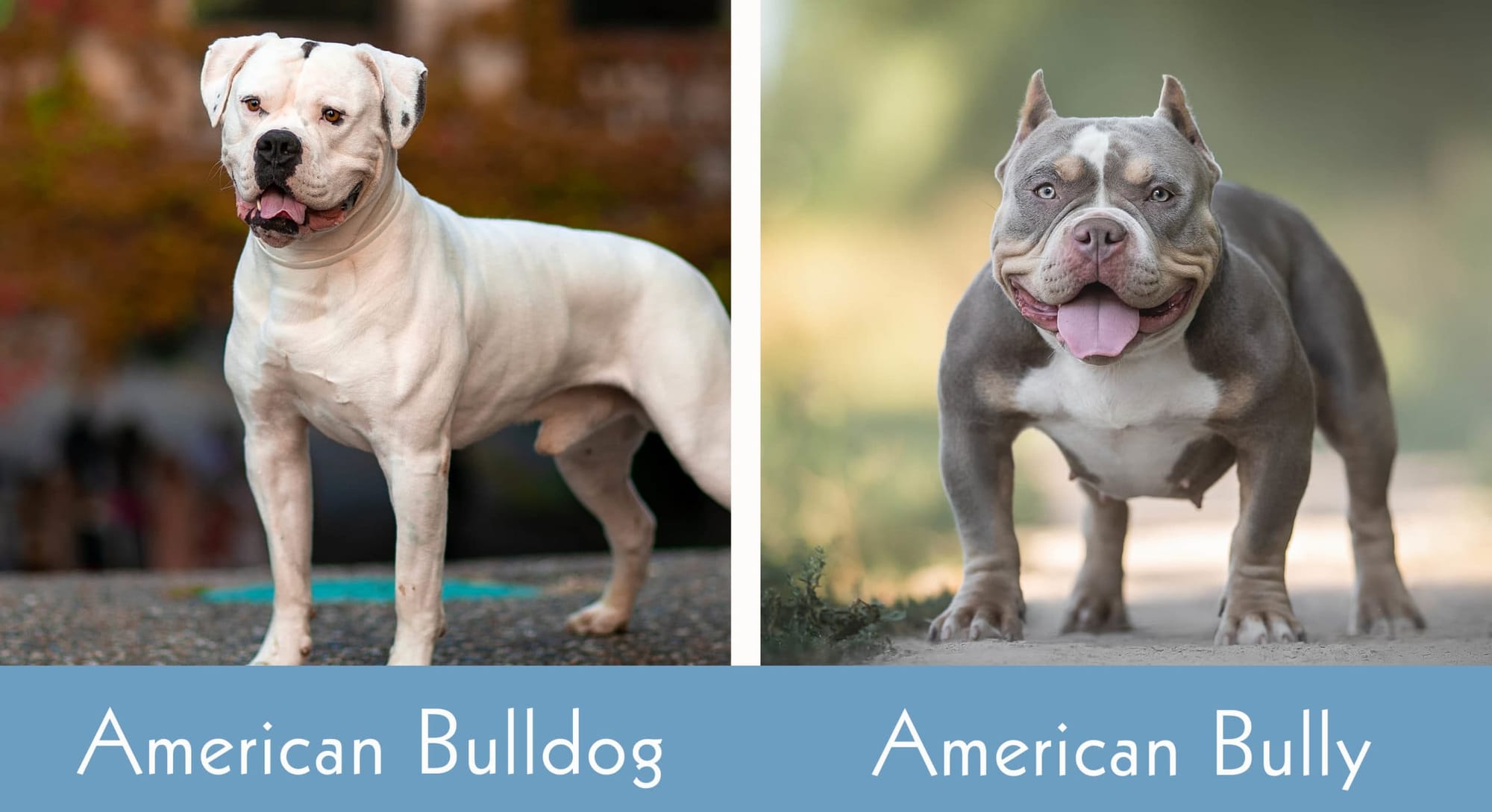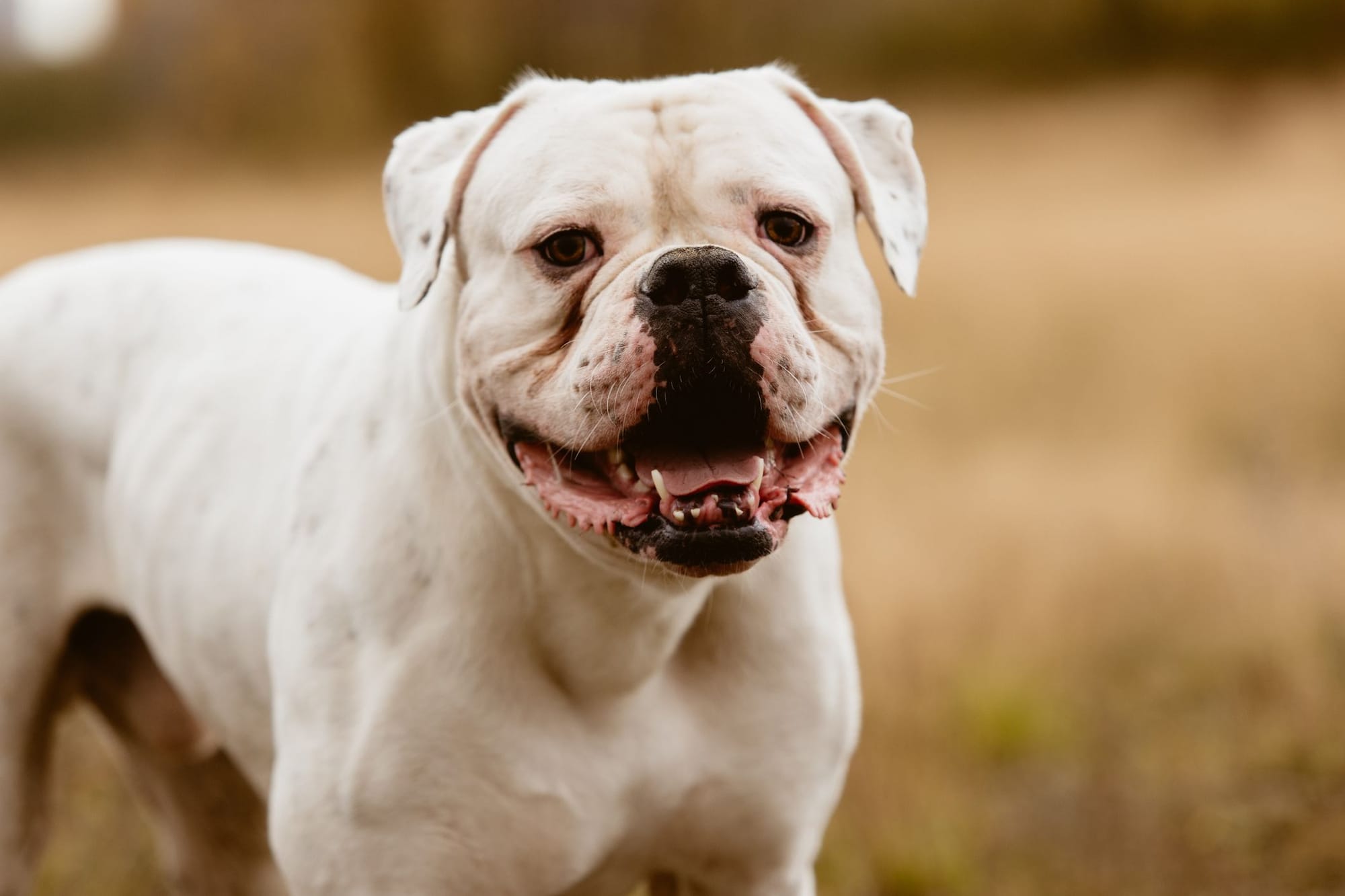Are American Bulldogs classified as XL Bullies? This is a common question among dog lovers and enthusiasts. American Bulldogs are known for their strength, power, and loyalty. They are a breed of their own, distinct from XL Bullies. While both breeds share some physical similarities, such as muscular bodies and broad heads, they have distinct characteristics that set them apart.

Understanding the American Bulldog Breed
American Bulldogs are a breed with a rich history. They were originally bred for working purposes, such as guarding and farm work. This breed is known for its athleticism, agility, and intelligence. American Bulldogs have a muscular build, broad chests, and a strong jaw. They come in different coat colors and patterns, including brindle, white, and fawn. American Bulldogs have a confident and fearless nature, making them excellent protectors and guardians.
When considering an American Bulldog, it's important to understand that they require regular exercise and mental stimulation. This breed thrives in an environment where they can channel their energy, whether it's through playtime, obedience training, or participating in dog sports. American Bulldogs are highly trainable, but they need a firm and consistent handler who can provide them with proper guidance and leadership.

Characteristics of XL Bullies
XL Bullies, on the other hand, are a selectively bred variation of the American Bully breed. They were bred with the intention of creating larger and more muscular dogs for the show ring. XL Bullies share some physical characteristics with American Bulldogs, such as a muscular build and a broad head. However, XL Bullies are generally more compact and stocky in appearance compared to American Bulldogs.
XL Bullies come in various sizes, with some reaching weights of over 100 pounds. They have a thick and powerful build, often displaying impressive muscle definition. XL Bullies have a friendly and outgoing personality, making them excellent family pets. They are known for their loyalty and affection towards their owners. While XL Bullies may have a strong and intimidating appearance, they are generally friendly and gentle with proper socialization and training.
Differences between American Bulldogs and XL Bullies
Despite some physical similarities, American Bulldogs and XL Bullies have distinct differences that set them apart. One key difference is their size. American Bulldogs tend to be larger and more athletic in build, while XL Bullies are more compact and stocky. American Bulldogs were originally bred for working purposes, while XL Bullies were bred for the show ring and as family companions.
Another difference lies in their temperament. American Bulldogs are known for their protective and assertive nature. They are natural guardians and may be wary of strangers. On the other hand, XL Bullies are generally friendly and outgoing, making them more suitable for families with children or other pets. It's important to note that individual temperament can vary within each breed, so proper socialization and training are essential for both American Bulldogs and XL Bullies.
Popular Misconceptions about American Bulldogs and XL Bullies
There are some misconceptions surrounding both American Bulldogs and XL Bullies. One common misconception is that American Bulldogs are aggressive or dangerous. While they are protective by nature, with proper socialization and agility training, American Bulldogs can be well-behaved and friendly companions. It's important to remember that any dog's behavior is a result of their upbringing and environment.
Similarly, XL Bullies are often incorrectly perceived as aggressive due to their size and muscular appearance. However, XL Bullies are generally gentle and friendly, making them suitable for families and individuals looking for a loving companion.
American Bulldog and XL Bully Breed Standards
Both American Bulldogs and XL Bullies have breed standards that outline their ideal physical traits and characteristics. Breed standards are guidelines set by kennel clubs and breed organizations to maintain the integrity of each breed. American Bulldogs should have a strong and muscular build, with a broad head and well-defined jaw. They should have a confident and fearless temperament, with a balanced and stable personality.
XL Bullies, on the other hand, should have a compact and muscular build. They should display impressive muscle definition and have a broad head with a well-defined jaw. XL Bullies should have a friendly and outgoing temperament, with a balanced and stable personality.
When considering adding an American Bulldog or XL Bully to your family, it's important to familiarize yourself with the breed standards to ensure that the dog you choose meets the desired traits and characteristics.
Training and Socialization Tips for American Bulldogs and XL Bullies
Training and socialization are crucial for both American Bulldogs and XL Bullies. Proper training helps establish boundaries and expectations, ensuring that your dog becomes a well-mannered and obedient companion. American Bulldogs and XL Bullies are intelligent breeds, making them eager to please and quick to learn. Positive reinforcement techniques, such as rewards and praise, work well with both breeds.
Socialization is equally important for both American Bulldogs and XL Bullies. Exposing them to different environments, people, and other animals from a young age helps them develop into well-adjusted and confident dogs. Early socialization also prevents behavior problems such as fearfulness or aggression.
Health Considerations for American Bulldogs and XL Bullies
Like all dog breeds, American Bulldogs and XL Bullies have their own health considerations. American Bulldogs are generally a healthy breed, but they may be prone to certain conditions such as hip dysplasia, elbow dysplasia, and certain types of cancers. Regular veterinary check-ups, a balanced diet, and regular exercise can help maintain their overall health and well-being.
XL Bullies may also be prone to certain health issues, including hip dysplasia, allergies, and skin conditions. Responsible breeders conduct health screenings and tests on their breeding stock to minimize the risk of passing on genetic conditions to their puppies.

Finding Reputable Breeders for American Bulldogs and XL Bullies
When looking to bring home an American Bulldog or XL Bully, it's crucial to find a reputable breeder. Reputable breeders prioritize the health and well-being of their dogs, following ethical breeding practices. They conduct health screenings on their breeding stock, provide proper socialization for their puppies, and offer ongoing support to puppy buyers.
Researching and contacting multiple breeders, asking for references, and visiting their facilities can help ensure that you are getting a healthy and well-bred puppy. Avoid purchasing from puppy mills or backyard breeders, as they often prioritize profit over the welfare of the dogs.
Impact on American Bulldog Communities
American Bulldog communities have experienced a profound impact due to the emergence of the XL Bully classification. This shift has not only influenced breeding practices but has also sparked discussions and debates within the community.
Shifting Trends in Breeding Circles
The advent of the XL Bully category has led to noticeable changes in breeding circles dedicated to American Bulldogs. Breeders now face decisions on whether to specialize in the traditional American Bulldog or cater to the growing demand for XL Bullies. This shift has created a divide among breeders, with some embracing the new classification and others adhering to the conventional standards.
Traditionalists argue that the focus should remain on preserving the classic traits of American Bulldogs, emphasizing their historical roles as working and family dogs. On the other hand, proponents of the XL Bully classification believe that recognizing and promoting the unique features of these larger dogs contribute to the breed's diversity.
This shift in breeding trends has brought about a spectrum of American Bulldogs, ranging from the traditional to the distinctly larger XL Bullies. The community is grappling with defining and maintaining the essence of the breed while accommodating the preferences of potential owners.
Community Responses and Opinions
As the debate over XL Bully American Bulldogs unfolds, community responses vary widely. Some enthusiasts welcome the diversity introduced by the XL Bully classification, seeing it as a natural evolution that mirrors changing preferences among happy dog owners. Others, however, express concern about potential negative consequences.
Critics within the American Bulldog community fear that the popularity of XL Bullies may overshadow the appreciation for standard American Bulldogs. This concern is rooted in worries about unethical breeding practices that prioritize size over the breed's overall health and temperament. These critics advocate for a balanced approach, emphasizing responsible breeding to maintain the integrity of the breed.
Conversely, supporters of the XL Bully classification argue that it provides a unique identity for a subset of American Bulldogs. They believe that recognizing XL Bullies as a distinct category allows for more accurate representation and understanding of the diverse traits within the breed.
Overall, the impact on American Bulldog communities is marked by a dynamic interplay of opinions, with ongoing discussions shaping the future direction of breeding practices and community values.

The Legality Aspect
The growing popularity of XL Bully American Bulldogs has prompted discussions surrounding the legality and potential regulatory implications associated with this distinct classification.
Breed-Specific Legislation
As XL Bully American Bulldogs gain recognition, there is a heightened awareness of breed-specific legislation (BSL). BSL refers to laws and regulations that target particular breeds or types of dogs, often in response to concerns about public safety. The increased visibility of XL Bullies has raised questions about whether specific legal restrictions may be imposed due to their size and perceived characteristics.
Advocates for XL Bullies argue against implementing BSL, emphasizing the need for fair and comprehensive legislation that considers individual behavior rather than breed stereotypes. They contend that responsible ownership and proper training are more effective in ensuring public safety than imposing blanket restrictions based on breed classifications.
XL Bully and Legal Restrictions
Examining the legal landscape reveals a varied approach to XL Bully American Bulldogs. Some regions may have stringent regulations regarding ownership, breeding, or public presence of certain breeds, while others may have more lenient or breed-neutral laws.
Prospective owners of XL Bullies need to be aware of local regulations governing dog ownership. This includes understanding any restrictions, licensing requirements, and responsible ownership guidelines that may apply specifically to XL Bully American Bulldogs.
Responsible breeding practices also play a crucial role in navigating the legality aspect. Breeders must be well-informed about existing laws and ensure compliance to avoid legal complications. Transparent communication with potential buyers regarding legal responsibilities is essential for ethical breeding practices.
Responsible Ownership
Owning an XL Bully American Bulldog comes with a significant responsibility that goes beyond legal considerations. Responsible ownership involves understanding and fulfilling the needs of the dog to ensure its well-being and positive integration into the community.
Understanding the Commitment
XL Bully American Bulldogs, due to their larger size and potential strength, require a dedicated commitment from owners. This commitment extends to providing proper nutrition, regular exercise, veterinary care, and a loving, safe environment.
Prospective owners should thoroughly research the breed, considering factors such as temperament, exercise requirements, and grooming needs. Understanding the commitment involved in caring for an XL Bully is crucial to forming a strong bond and promoting the dog's overall happiness.
Meeting the Needs of an XL Bully
Meeting the specific needs of an XL Bully involves tailoring care routines to accommodate their size and characteristics. Adequate space for exercise, a balanced diet, and regular veterinary check-ups are essential components of responsible ownership.
Behavioral training is also key to ensuring that XL Bullies can coexist harmoniously within the community. Socialization, obedience training, and positive reinforcement techniques contribute to a well-behaved and well-adjusted XL Bully.
In conclusion, the legality aspect of owning an XL Bully American Bulldog necessitates a thorough understanding of local regulations, while responsible ownership goes beyond compliance with the law. It involves a commitment to the dog's welfare, ethical breeding practices, and fostering a positive relationship between owners and their XL Bullies.
Final Thoughts on American Bulldogs and XL Bullies
In conclusion, American Bulldogs and XL Bullies are two separate breeds with their own unique traits. While they may share physical similarities, such as muscular bodies and broad heads, they have distinct differences in size, temperament, and purpose. It's important to understand these distinctions when considering which breed is right for you.

Both American Bulldogs and XL Bullies can make excellent companions for the right owner. Whether you're looking for a working dog or a family pet, understanding the characteristics and needs of each breed is essential. With proper training, socialization, and care, both American Bulldogs and XL Bullies can bring joy, loyalty, and companionship to your life.
FAQs
- Q1: Can an American Bulldog be classified as an XL Bully?
- A: The classification depends on specific traits and breeding practices.
- Q2: What are the key differences between American Bulldogs and XL Bullies?
- A: Differences include size, build, and distinct physical characteristics.
- Q3: Are XL Bullies a recognized breed, or are they a variation of American Bulldogs?
- A: XL Bullies are a subset within the American Bully breed, emphasizing specific traits.
- Q4: Do legal regulations impact the classification of these breeds?
- A: Legal implications may vary, and it's essential to understand any existing regulations.
- Q5: How can enthusiasts contribute to responsible breeding practices?
- A: Supporting ethical breeding practices and promoting awareness are crucial steps.




